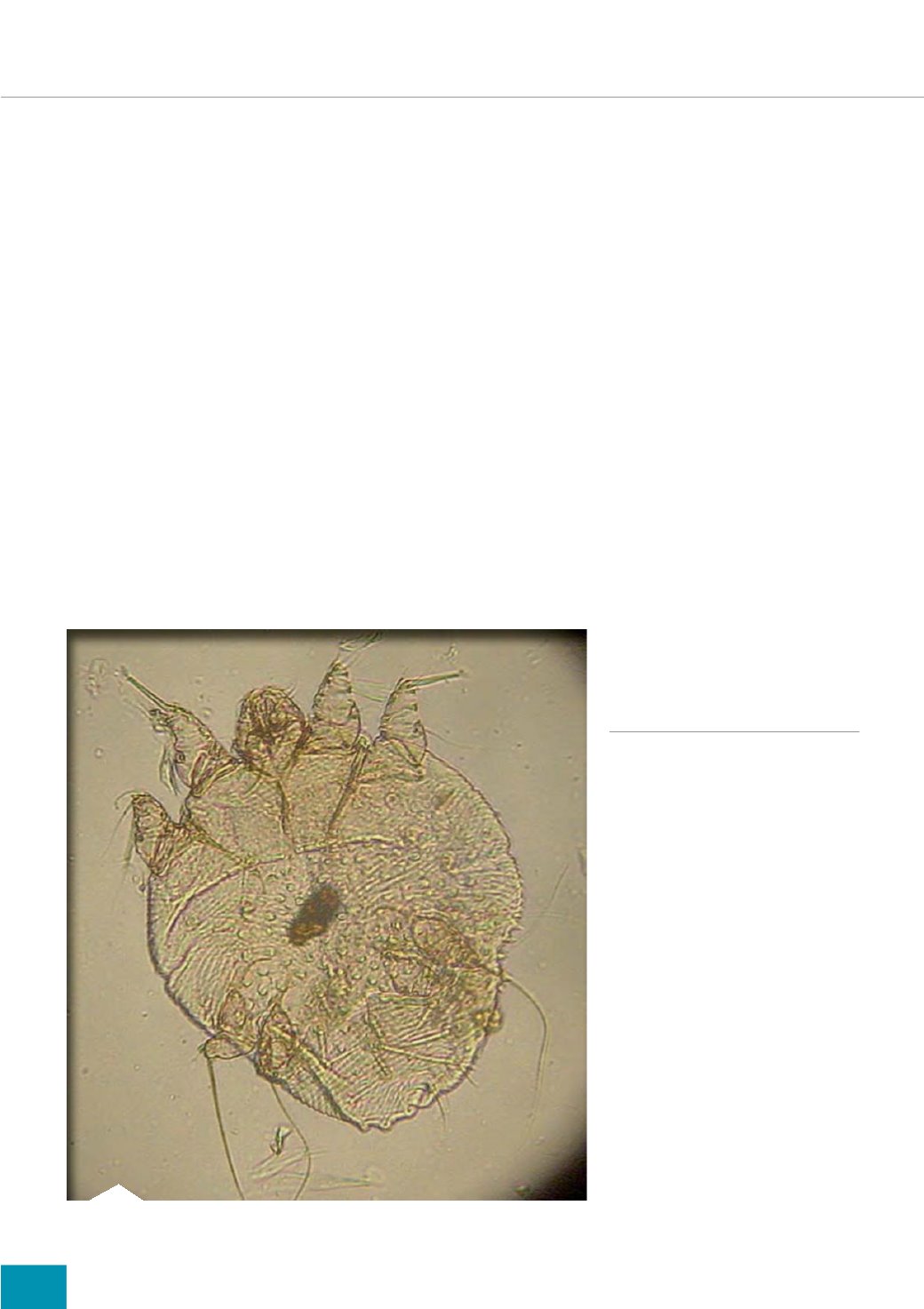
48
SKIN CARE TODAY
2015,Vol 1, No 1
time and is dependent on the age,
site and type of wart (DermNet NZ,
2013a), however, various techniques
are available:
i
Occlusion with duct tape
(Nottingham Support Group for
Carers of Children with Eczema
[NSGCCE], 2014)
i
Chemical applications of topical
salicylic acid
i
Cryotherapy (medical use of
low temperatures).
Over-the-counter freeze
sprays, glutaraldehyde (a solution
used to sterilise medical and
dental equipment), formaldehyde
(chemical used as a disinfectant),
and silver nitrate (a caustic chemical
compound that destroys skin cells
and is sometimes used to treat skin
conditions) are not recommended
(NICE, 2009).
Complications and referral
This is rarely necessary as warts
can generally be managed in
primary care, unless there is
uncertainty about the diagnosis or
the warts are multiple or recalcitrant
(NICE, 2009).
SCABIES
What is scabies?
Scabies is an intensely itchy skin
infestation caused by the human
parasite
Sarcoptes scabiei
(or
‘itch mite’ [
Figure 2
]), which is
transmitted from person-to-person
via direct contact with the skin. As
the itch and rash take 2–6 weeks
to develop in a person who has
been infested with scabies for
the first time, people are often
infectious before the rash develops
(NICE, 2011).
Who gets it?
It is estimated that approximately
100 people per 100,000 of the
population visit their GP with
scabies each month in the UK. The
prevalence is currently rising in the
UK (due partly to asymptomatic
carriage, drug resistance, and
tourism from countries or districts
with a higher incidence) and is
highest in urban areas; in the north
of the country; in children and
women; and during the winter)
(for example in swimming pools or
communal washing areas). Infection
is more likely to occur if the skin is
damaged or wet.
Who gets them?
Warts are common and most people
will experience them at some point
in their lives, although they are
more common in children
and adolescents.
What do they look like?
Warts have a hard, ‘verrucous’
surface. There is often a tiny black
dot in the middle of each scaly spot,
due to a thrombosed capillary blood
vessel. There are various types of
viral wart (DermNet NZ, 2013b):
i
Common warts appear on the
backs of fingers or toes, and on
the knees
i
Plantar warts (verrucas)
i
Mosaic warts develop on the
sole of the foot and appear in
clusters over an area, sometimes
several centimetres in diameter
i
Plane, or flat, warts
i
Periungual warts develop at the
sides or under the nails and can
distort nail growth
i
Filiform warts are characterised
by a long ‘stalk’
i
Oral warts can affect the lips and
even the inside of the cheeks
i
Genital warts.
What tests should be done?
Tests are rarely necessary to
diagnosis viral warts as they are so
common and have a characteristic
appearance.
How are they treated?
As warts are not a serious problem,
they are often left alone to resolve
naturally. However, in some cases,
they may be painful, look ugly and
cause embarrassment. To remove
them clinicians have to stimulate
the body’s own immune system to
attack the wart virus. This requires
FOCUS ON SKIN INFECTIONS/INFESTATIONS
i
Credit: Kalumet @ commons.wikimedia.org
Figure 2.
The human parasite
Sarcoptes scabiei
.


